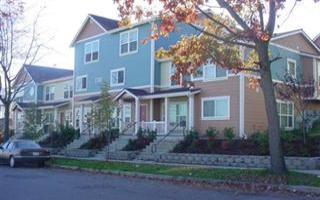
WASHINGTON, DC - The nation's housing industry and the economy have just about seen the worst of the painful downturn that greatly intensified since last September's turmoil in the financial markets, according to economists speaking on April 23 at NAHB's Construction Forecast Conference. And despite a continuation of rising unemployment well into next year, although at a slowing pace, housing in this year's second half is expected to begin gradually leading the economy to higher ground, they said.
"There's a lot of skepticism out there. This is a very deep hole we're in," acknowledged NAHB Chief Economist David Crowe. But he said thereare several reasons to believe that "the housing recession is nearing an end and housing will return on a very slow basis."
Crowe said that new single-family home sales probably reached their trough in the first quarter of this year, hitting a record low of 320,000 on a seasonally adjusted annual basis, down from about 1.2 million at their peak.
Sales for 2009 are projected to total 364,000, he said, 24% below the 2008 level, and then climb 48% next year to 539,000.
The onset of a recovery in single-family housing starts should trail closely behind sales, with production hitting its cyclical low in the current business quarter at an annual rate of 330,000.
About 360,000 single-family homes are expected to be started this year, he said, a 42% decline from 2008, which will be followed by a 45% rise to 523,000 units in 2010.
Battered even more severely than single-family builders by the shrinking availability of acquisition, development and construction (AD&C) financing, multifamily starts are not expected to show signs of recovery until next year, bottoming out in the third or fourth quarter at a seasonally adjusted annual rate of 110,000, he said.
According to NAHB's forecast, multifamily production will total 130,000 units this year, which would be 55% below last year's level, and slow 3% further in 2010, to a total of 126,000 units.
Crowe indicated that housing markets are now struggling in all parts of the country as the result of the deepening slump in the overall economy and job losses that have escalated to above the 600,000 level in recent months.
However, he said, prime conventional conforming home mortgage interest rates, which are now at a generational low of roughly 4.75% — along with low home prices and the $8,000 first-time home buyer tax credit — have greatly improved housing affordability, generating a notable increase in prospective home buyer traffic that should begin translating into a pickup in sales.
Moving forward, the housing market should derive strength from pent-up demand and demographics, which hold the potential for strong household growth. Annual household formations are forecasted to average 1.532 million for the period of 2009 to 2013, compared to an average of 1.247 during 2004 to 2008. Providing "an extra push" will be the echo boom generation, the children of the post-World War II baby boom, the oldest of which are now in their late 20s, he said.
Following a 6.3% decline in real growth in the gross domestic product in the fourth quarter of 2008, the worst since the early 1980s, deterioration in this year's first quarter should be almost as bad, Crowe said, with a drop in GDP of about 5.2%. The current quarter should show that "some of the worst is past," he said, with a decline in growth of perhaps something just above 1%, demonstrating that consumers are slowly coming back to life and paving the way for a return to positive territory in the following quarters.
Source: NAHB.org